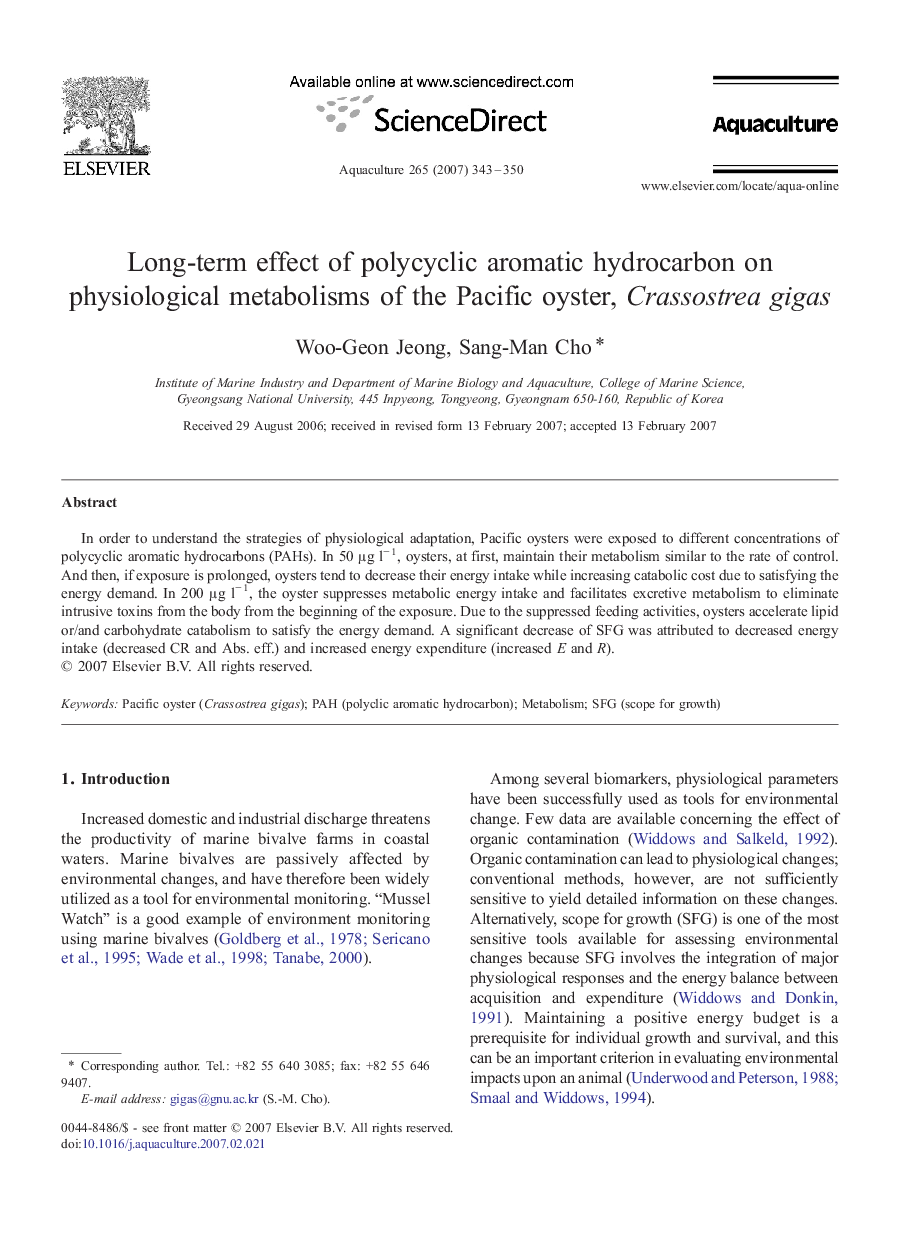| Article ID | Journal | Published Year | Pages | File Type |
|---|---|---|---|---|
| 2425640 | Aquaculture | 2007 | 8 Pages |
In order to understand the strategies of physiological adaptation, Pacific oysters were exposed to different concentrations of polycyclic aromatic hydrocarbons (PAHs). In 50 μg l− 1, oysters, at first, maintain their metabolism similar to the rate of control. And then, if exposure is prolonged, oysters tend to decrease their energy intake while increasing catabolic cost due to satisfying the energy demand. In 200 μg l− 1, the oyster suppresses metabolic energy intake and facilitates excretive metabolism to eliminate intrusive toxins from the body from the beginning of the exposure. Due to the suppressed feeding activities, oysters accelerate lipid or/and carbohydrate catabolism to satisfy the energy demand. A significant decrease of SFG was attributed to decreased energy intake (decreased CR and Abs. eff.) and increased energy expenditure (increased E and R).
